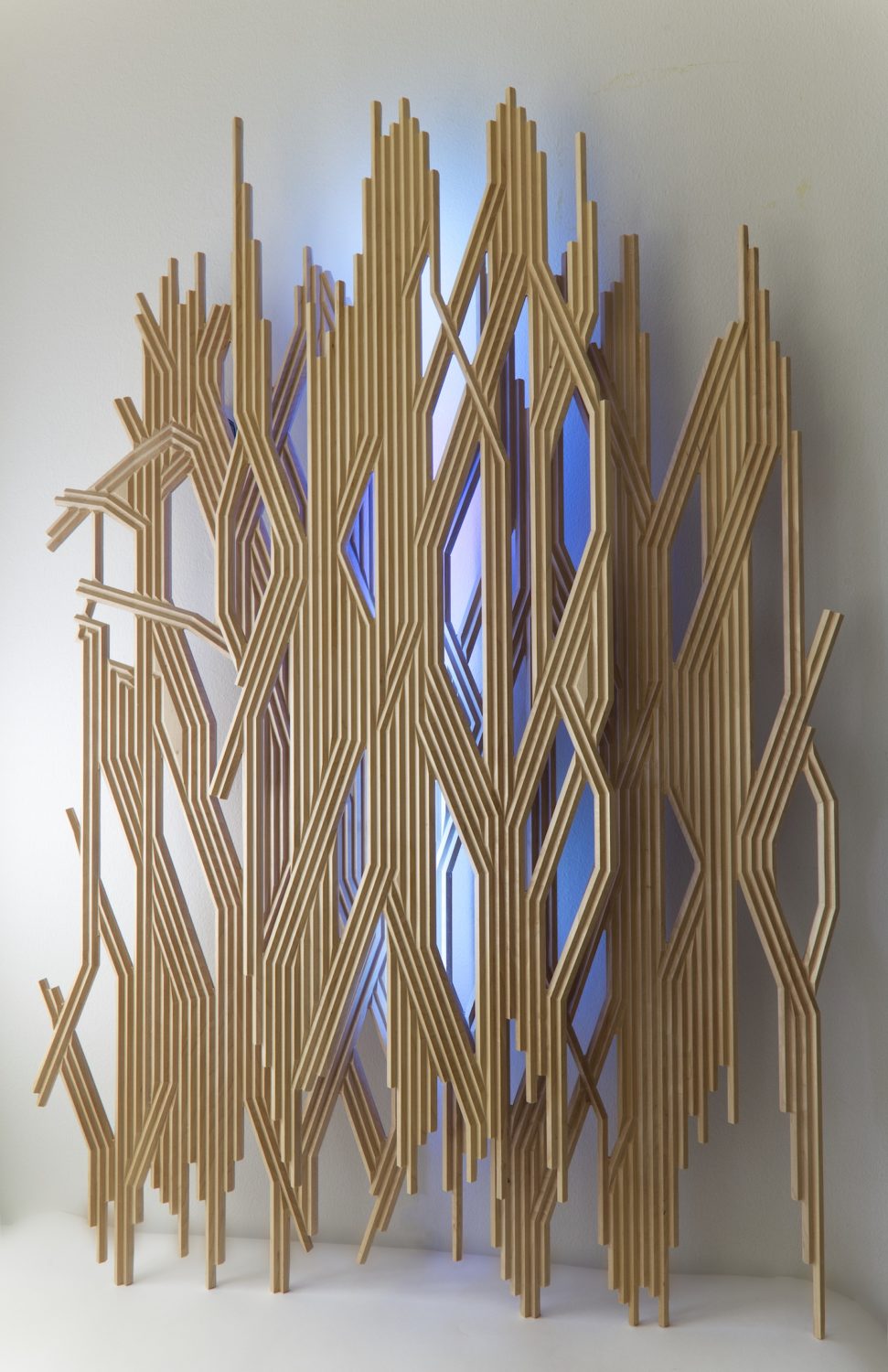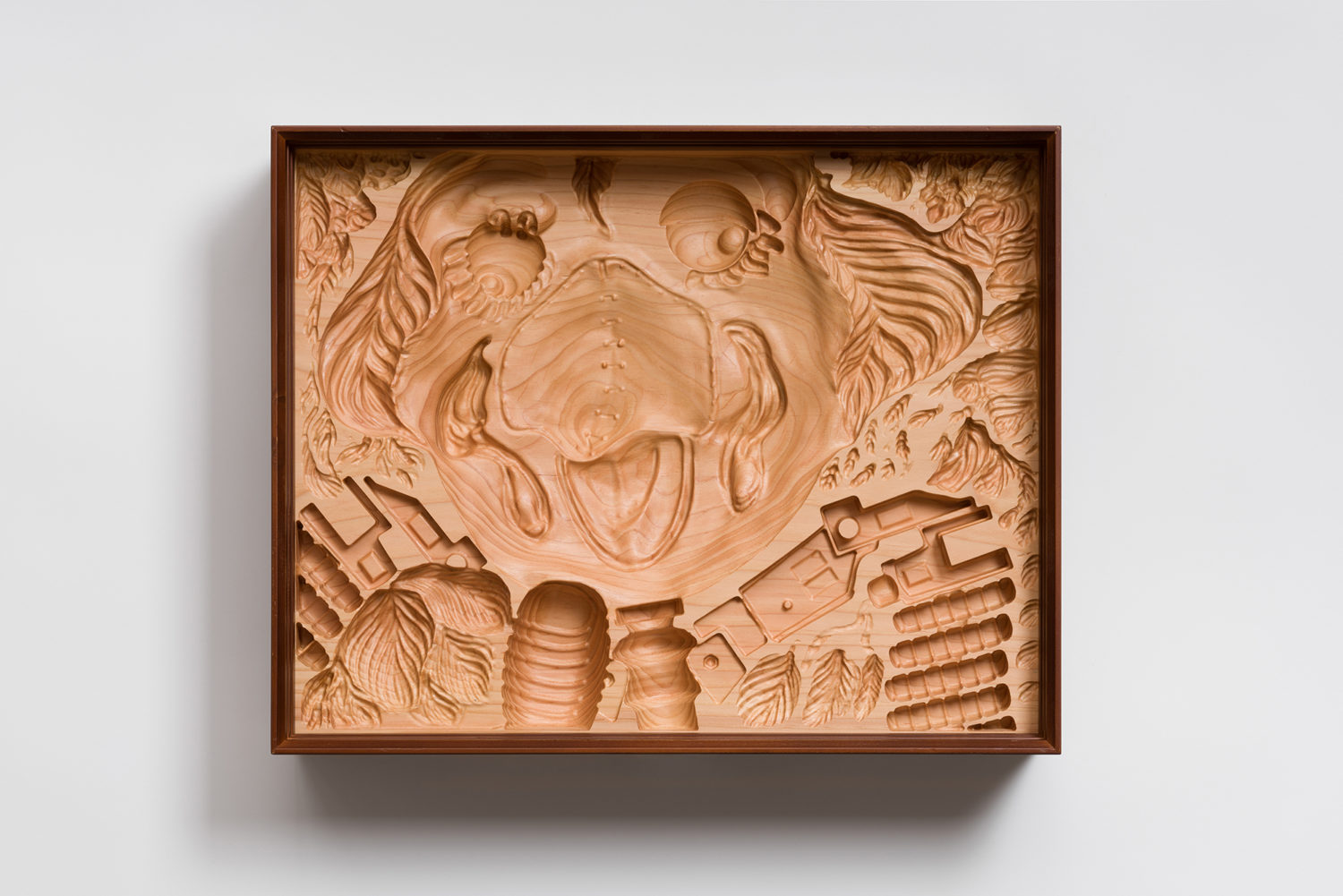Nina Lund was hesitant when asked to join the visual arts council in Ikast-Brande Municipality. Collaborating with civil servants and politicians was new to her. However, she brought a strong professional background and experience as a ceramicist with her own workshop in Ejstrupholm, between Ikast and Brande.
‘I’m a clay person, and I know about that material and the developments within that part of crafts. That has proven to be important. It’s a skill that can be put to use,’ she says.
Nina Lund joined the local visual arts council and has, since 2010, influenced decision-makers to always remember craftsmanship and design when commissioning decorations. In this context, the ceramicist is somewhat of an exception. Municipal visual arts councils (sometimes simply called art councils) are typically made up of artists or art experts. In some places, politicians also sit on the council, while it is rare to find craftspeople and designers represented.
“That’s a huge problem. My dream is that in the next election term, every art council across the country will include a craft artist. It’s justified. We have a lot to contribute when it comes to materials, and our expertise can make a difference when suggesting exciting craftspeople or designers to carry out a project.”
Facts
When, for example, municipalities apply to the Danish Arts Foundation (Statens Kunstfond) for support for art in public spaces, there is an opportunity to seek funding for all disciplines within the Foundation—including craftsmanship and design.
The Danish Arts Foundation also supports Municipal Visual Arts Councils. Applications for funding both to art councils and to the grants for public art are reviewed by the Foundation’s Visual Arts Project Support Committee.
Visual Artists Dominate the Councils
The idea behind the municipal visual arts councils is to strengthen the presence of art in society generally, and more specifically in public institutions. The focus from lawmakers has been on visual art, which is the term that recurs in texts from ministries and the Danish Arts Foundation (Statens Kunstfond). It is the Visual Arts Project Support Committee under the Arts Foundation that manages a fund from which municipalities can receive support.
The purpose of the scheme explicitly states that funding can be granted to municipalities with a visual arts council, ‘where a majority of the members have visual arts expertise.’ Crafts and design are not mentioned, which surprises Nina Lund.
‘It would be desirable for the Danish Arts Foundation to include crafts. Why this difference? We can talk about materials and history on equal terms with visual artists.’
It is not a legal requirement for a municipality to establish an art council, and not all municipalities have one. The councils mainly provide recommendations on the renovation of artworks and advise institutions on decoration. Members can also initiate projects involving public art. These are all areas where craftspeople and designers could contribute—if given the chance.
Ikast-Brande Municipality was quick to establish its council. Members serve four-year terms aligned with municipal election cycles. Currently, the visual arts council consists, besides Nina Lund and a municipal cultural consultant, of a sculptor, a painter, and a weaver, all members of the Danish Visual Artists’ Association. It is a strength in their work that the council is made up of practicing artists and craftspeople.
‘Different worlds have to come together when municipalities decide to acquire art or crafts. The council must convince decision-makers that art and crafts add value. It’s a long, tough effort to create that understanding. But I think we have come a long way,‘ explains Nina Lund.

The Council Must Ensure High Professional Quality
Budgeting is an important part of the equation. Ikast-Brande Municipality ranks third to last on the Ministry of the Interior’s list of cultural spending per inhabitant. However, whenever new construction takes place in the municipality, 2% of the budget is allocated specifically for the purchase of art and decoration. In the past, this money would sometimes disappear into the general construction budget. Now, the visual arts council holds politicians accountable for their promises, says Nina Lund.
‘We confront them and remind them that they need to live up to what they’ve promised the citizens. It takes a long time to convince politicians and officials that art has a value beyond just money. It’s become easier as more of our projects have succeeded. Then decision-makers can see that art and crafts matter in new buildings. It could be special floors, curtains, or furniture. These elements help create well-being for employees and make the spaces interesting to visit.’
When it comes to advising on new acquisitions for Ikast-Brande Municipality, the process is clear: at least three artists are proposed, who, for a fee, submit proposals for the project.
‘The council must ensure high professional quality. We have no personal taste in this context; we guarantee that the work is up to standard. There should ideally be a balance between established and emerging artists. Our goal is always to include a wildcard or a young artist in the running. It’s also important that those we propose are capable of completing the task,’ says Nina Lund.
She has experienced that it can be difficult to get support for proposals involving crafts. Institutions often find it easier to choose traditional art. The key is to keep pushing, and it helps to have a craft artist on the visual arts council.
‘If there were a craft artist in every municipal visual arts council, more people would be aware of what’s happening in the field. That would be a huge gain. From my experience, people are interested—they just don’t know the possibilities. Visual art is the safe choice, but we can point to exciting craft artists. For example, when we in Ikast-Brande have invited weavers to contribute to projects, they have been really good with colors and in creating texture in a space.’

Call to Action: Step into the Arena!
Nina Lund is also a member of the main board of Danish Crafts & Design Association (Danske Kunsthåndværkere & Designere) and is aware of the need to prepare craft artists for working with municipalities. Public projects often come with specific requirements—ranging from knowledge of building permits to a language that is often very different from what is spoken in a workshop.
Municipal elections will take place in November 2025. After that, new members will be appointed to the art councils and visual arts councils that exist in many municipalities across the country. Nina Lund has a message for craft artists and designers who want to influence how their municipality purchases and presents art.
‘We need ambassadors who explain what craft and design can offer. We shouldn’t just wait for someone to come and ask if we want to be involved. Check your local municipal art council. Maybe they need new members? And if your municipality doesn’t have an art council, they can be encouraged to start one. It’s time to step into the arena.’
Nina Lund’s 15 years on the visual arts council in Ikast-Brande Municipality have taught her that craft artists definitely have the skills needed—both to serve on the council and to carry out municipal projects.
‘We live in a time when craft is experiencing a popular revival, with great interest in ceramics, textiles, and more. It’s important that we, from the professional side, get involved and help shape the decoration of the spaces we inhabit.’
It’s really about being active and engaging in dialogue with politicians and institutions—they need input.
‘I find that politicians are receptive and interested. Art and craft are new worlds for them. In our municipality, we have seen positive development. Among other things, we started a municipal art school for children. That became a reality because we talked and gained understanding of each other.’
About Nina Lund
Ceramic artist (b. 1972). Trained as a potter at the Crafts School in Sønderborg in 1997. She owns her own ceramics workshop and shop in Ejstrupholm.
She is a member of Ikast-Brande Municipality’s Visual Arts Council and also serves on the main board of Danish Crafts & Design Association (Danske Kunsthåndværkere & Designere).

Nina Lund. Photo by Jacob Due.
Further Readings
Crafts in Construction: How crafts can contribute to public spaces
Crafts rely on the traditional knowledge of making where the human hand is preferred over the industrial process. Is there room for craftsmanship and material-based interpretation in the built environment? Can industrial processes learn something essential from crafts and from artists’ way of thinking?

The space of possibilities: Perspectives on art, crafts and design in the public spaces and the built environment
Art consultants have become a significant link between clients, architects and artists. But what is their role, and what are their perspectives on collaboration formats, decorative projects and the space of possibility available to art?
In this talk, art consultants Tyra Dokkedahl and Stenka Hellfach share their views of the potential of art in the public space and the built environment and how makers and designers can become more involved. Among other activities, the two art consultants initiated the cross-disciplinary event series FORUM for architects, clients and practicing artists.


